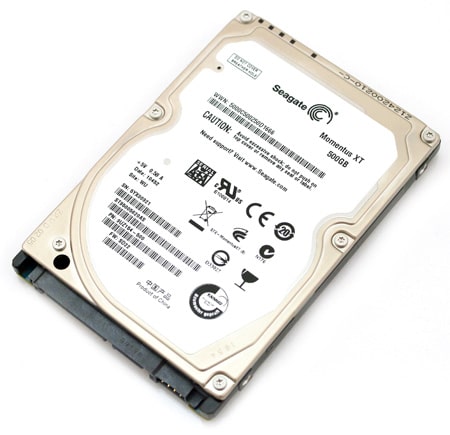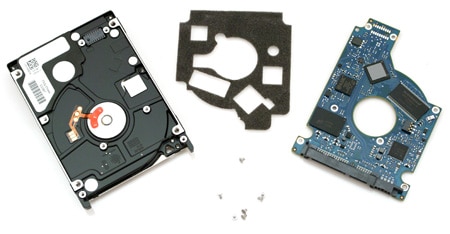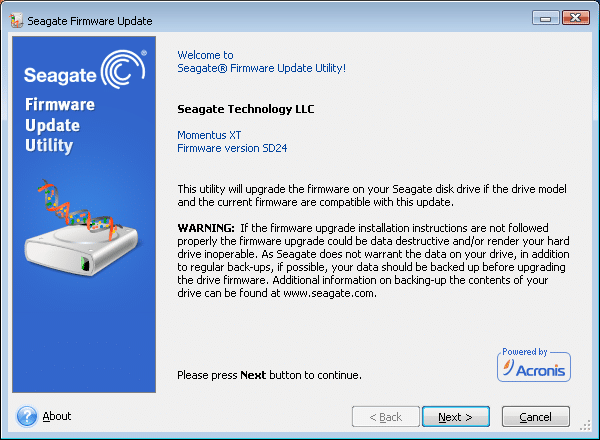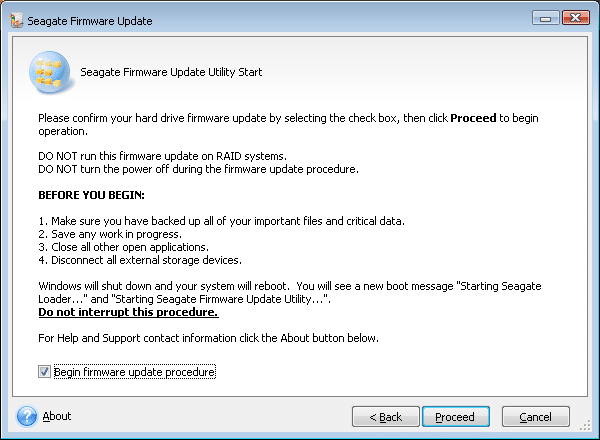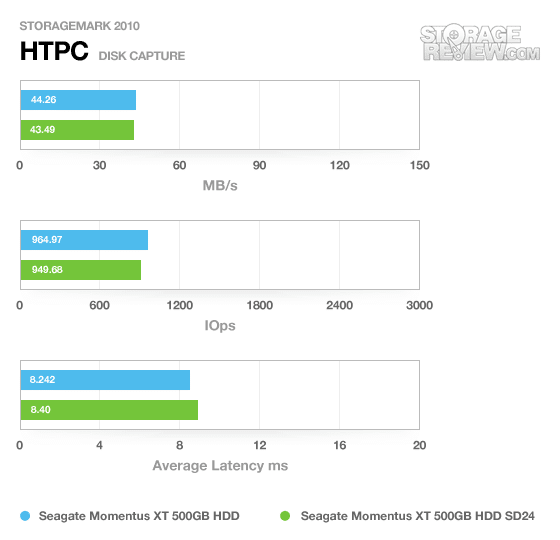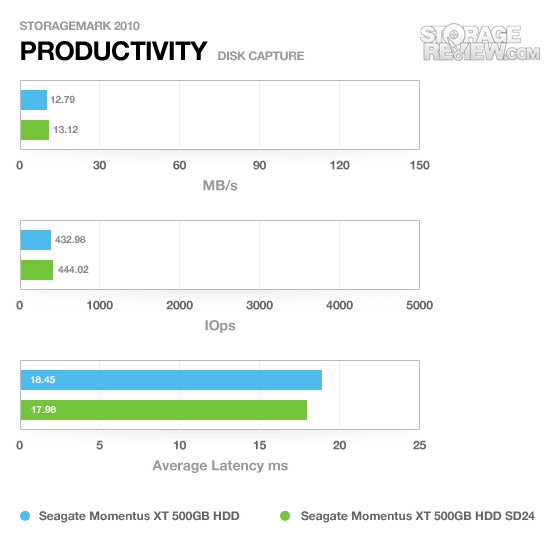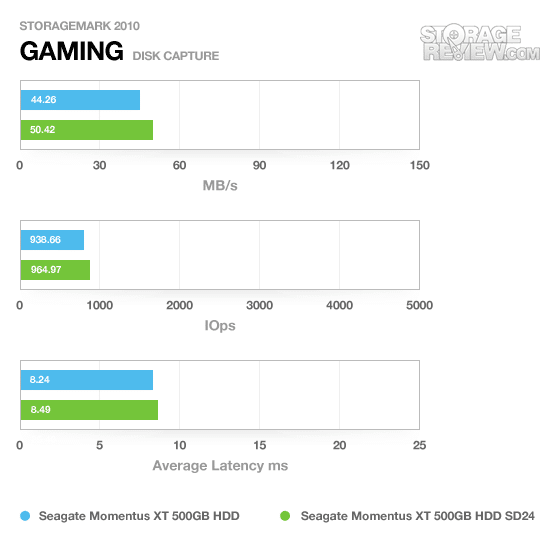
Almost a year ago we reviewed the first hybrid SSD/HDD (well, first in a long time); the Seagate Momentus XT. Since that time it has remained the one and only drive in the hybrid drive category and gained a ton of popularity in the enthusiast market. While offering a very good mixture of performance and capacity, which can be crucial in single drive notebook configurations, there were limitations like fast spin-down times and the small cache size that many hoped would be fixed or improved. Today we look at the latest firmware patch, dubbed SD24 for the Momentus XT, which helps fixes this drive’s most complained about flaw; lag associated with spinning down too quickly at idle.
The notebook market has both system and component manufacturers at all ends of the spectrum looking for ways to save power. This includes everyone from hard drive manufacturers to the guys that make wireless cards, all in the hopes to increase battery life by another few minutes. With hard drives you can improve efficiencies with the motor and controller interface, but the biggest power savings is going from idle to a spun-down state. This effectively turns the hard drive off until another command tells the drive to spin back up quickly again to resume work. This startup time is where the lag associated with some hard drives is found, since unlike an SSD, platter-based drives can’t restart instantly. Depending on the drive and its intended uses, the specified time limit before a drive goes dormant can vary, but by many accounts it seems the initial time for the XT was over-aggressive, putting the drive into a spun-down state too quickly.
In December of last year Seagate quietly released a new firmware update for the Momentus XT without a changelog or other information indicating what the software updated. Once it hit the Seagate support community, people started updating drives. Even without a full explanation of the changes users were quickly able to deduce that the lag issues had pretty much vanished. Since we still have two 500GB Seagate Momentus XT drives in our lab, we decided to run the firmware update ourselves and see what the process entailed.
Prepping the Drives
For users with a Windows-based system, Seagate offers one of the most painless firmware update procedures we’ve seen. Normally to update the firmware on a hard drive, and even some SSDs, you need to download an ISO image to burn to a CD or DVD, and boot into a DOS-like system to initiate any update to the drive. The method Seagate uses to let users update the Momentus XT is substantially more simple.
The first step is to go to the Seagate Support website and download the firmware update (in the event the file changes, we aren’t hot-linking the *.exe directly from this review). Once you get through the language prompts, the first screen tells you to verify the drives are not configured in RAID, and to backup all data. Many users have been successful in updating this drive with an intact OS, but no update will ever be 100% perfect. Accidents can happen and you drive could end up busted. It is always important to backup important files to another drive before flashing new firmware.
The next step is where we get our first indication that this application has an ace up its sleeve. Towards the bottom of the image, you will notice that you are supposed to see a "Starting Seagate Loader" message after restarting the system. It turns out that Seagate installs a simple bootloader onto the primary system drive, loading a firmware update program automatically without having to deal with USB thumb drives or burned CDs.
We weren’t able to grab any screenshots during the DOS-level update process, but we were able to glean some facts about its methods. The first stage after loading the software is searching for drives installed in the system. In our case we had our test rig’s boot drive (WD Caviar Black) and two Momentus XTs hooked up as slaves. The software detected the Caviar Black as incompatible and then went about its business on the two XTs. For users with multiple drives in their systems this should give some comfort knowing that it won’t blindly write firmware to any drive installed in the system.
Momentus XT’s New Groove
The first and most obvious thing we noticed after the firmware update was that the Momentus XT no longer spun down. Well it might have eventually, but in our usage, we always saw it in a state ready to perform. When we first reviewed this drive we noticed that if the drive sat for a few seconds, it would spin down and report as 0.00MB/s for the first few seconds of a benchmark being performed. This was no longer present, which for most users means no more lag. If you happened to have a RAID setup that got quirky when the drives turned off, it looks like that should also be fixed going forward.
Looking through the Seagate support forum, some users have indicated lower noise levels, faster speeds, and increased battery life. While some might brush that off as placebo effect, we re-benchmarked it using our real-world traces to see if anything had changed. We were kind of surprised by the results.
HTPC performance stayed pretty much the same, with a very small drop compared to the stock firmware. Still within the range for error, although we did get this score as an average of running the trace until it hit the peak cached level, and then averaged the next three sequential results. In terms of the actual percentage drop, it was very small coming in at 1.6%.
Productivity performance increased slightly by 2.8%, which should improve the performance that most people see when using this drive.
When we first published the Momentus XT review, we didn’t have our Gaming trace finished, but we have been keeping records internally for situations like this. In this trace performance dropped like in the HTPC trace, although now by 2.8%.
Conclusion
Firmware updates on hard drives are generally not adopted by audiences as large as those for the Seagate Momentus XT. Looking through user comments left on retailer websites, almost all negative responses related back to lag associated with the drive spinning down. It looks like Seagate took the user feedback to heart and issued the much needed update on this drive. The main problem of the drive spinning down too quickly has been resolved, which should help out a lot of people. There may also have been caching algorithm changes, although it’s only speculation at this point given how small the changes we detected were.
We do give huge props to Seagate for how easy it is to process this update. For Windows-users you simply run a program that installs a temporary bootloader that automatically scans for supported drives, and flashes the new firmware. You still need to drop the drives out of RAID and if you aren’t running Windows you still need to burn a CD, but for the masses Seagate worked out an option that is dead simple to follow. The key learning to take away from this article is if you haven’t already updated your Seagate Momentus XT; update it now!

